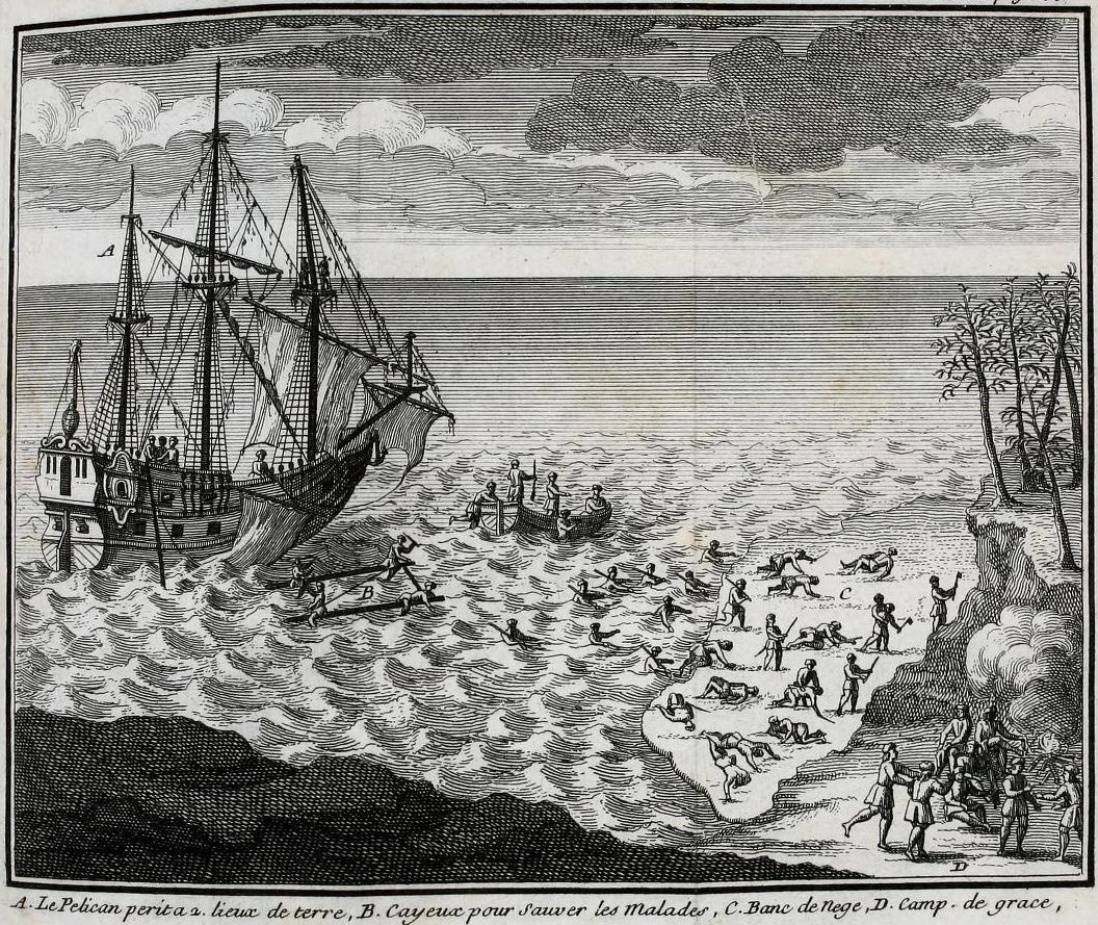The Battle of Hudson Bay took place on 5 September 1697 during King William’s War, the North American theatre of the Nine Years’ War between England and France. Throughout the conflict, French forces tried to capture enemy forts in and around Hudson Bay. One of these was York Factory, a lucrative and important trading post the Hudson’s Bay Company (HBC) built in 1684. The French captured York Factory in 1694, only to have the English take it back a year later. Then, in 1697, a naval battle ensued in Hudson Bay between English and French forces. Captain Pierre Le Moyne d'Iberville succeeded in taking York Factory for the French. The fort was later transferred back to the British after the Treaty of Utrecht of 1713. (See also Fur Trade in Canada.)
Historical Context
King William’s War between England and France was declared on 17 May 1689, but open conflict in Hudson Bay preceded it by three years. The French colonial fur trading company, Compagnie du Nord, was dismayed by the re-routing of valuable fur-trade commerce to Hudson’s Bay Company (HBC) ships travelling to England via Hudson Bay, totally bypassing Montreal. In retaliation, the Compagnie du Nord persuaded the governor of New France to mount an overland military expedition. A force of slightly more than 100 men, consisting of French soldiers and Canadian irregulars, was recruited and sent north. By the end of 1686, they had taken the HBC posts of Moose Factory, Fort Charles, and Fort Albany on the shores of James Bay. The only post that remained in HBC possession was York Factory.
D'Iberville and the Battle for York Factory
In 1690, Pierre Le Moyne d’Iberville, commander-in-chief of the French forces on Hudson Bay, made an attempt on York Factory, but was prevented by the presence of an English warship anchored at Five Fathom Hole.

D’Iberville led a second incursion in 1694. York Factory was defended at this time by the Independent Company of Foot, a collection of fur traders with limited military training. After strategic fire from cannons landed on shore from d’Iberville’s ships, York Factory surrendered. D’Iberville renamed the outpost Fort Bourbon. Ten months later, three Royal Navy frigates recaptured the fort.
York Factory Falls to the French
In 1697, the conflict escalated to what historian Peter C. Newman has termed “the greatest Arctic sea battle in North American history.” France sent a fleet of warships under d’Iberville to Hudson Bay, but due to ice and fog in Hudson Strait, only d’Iberville’s flag ship Pélican actually reached the bay. The day after arriving at York Factory, d’Iberville encountered the Royal Navy warship Hampshire and two HBC armed freighters, the Dering and the Hudson’s Bay. The British had a 118 to 44 gun advantage.

The ensuing battle lasted for three hours. In the end, the Hampshire, after receiving a full broadside from the Pélican, struck a shoal and sank. The Hudson’s Bay surrendered, and the Dering fled for the safety of the Nelson River. Badly damaged, the Pélican struck a sandbar several kilometres from shore. The crew had to swim for land as their lifeboats had been shot away.
The remaining French ships arrived several days later. Using a rouse to distract the occupants of the fort, d’Iberville succeeded in landing his troops under the York Factory cannon, then coaxed a surrender from the outpost’s governor, Henry Baly. For his efforts, d’Iberville won France’s highest decoration, the Cross of Saint Louis.
York Factory Returned to the British
York Factory remained in French possession until 1713, when the Treaty of Utrecht returned all Hudson Bay posts back to the British.

 Share on Facebook
Share on Facebook Share on X
Share on X Share by Email
Share by Email Share on Google Classroom
Share on Google Classroom






